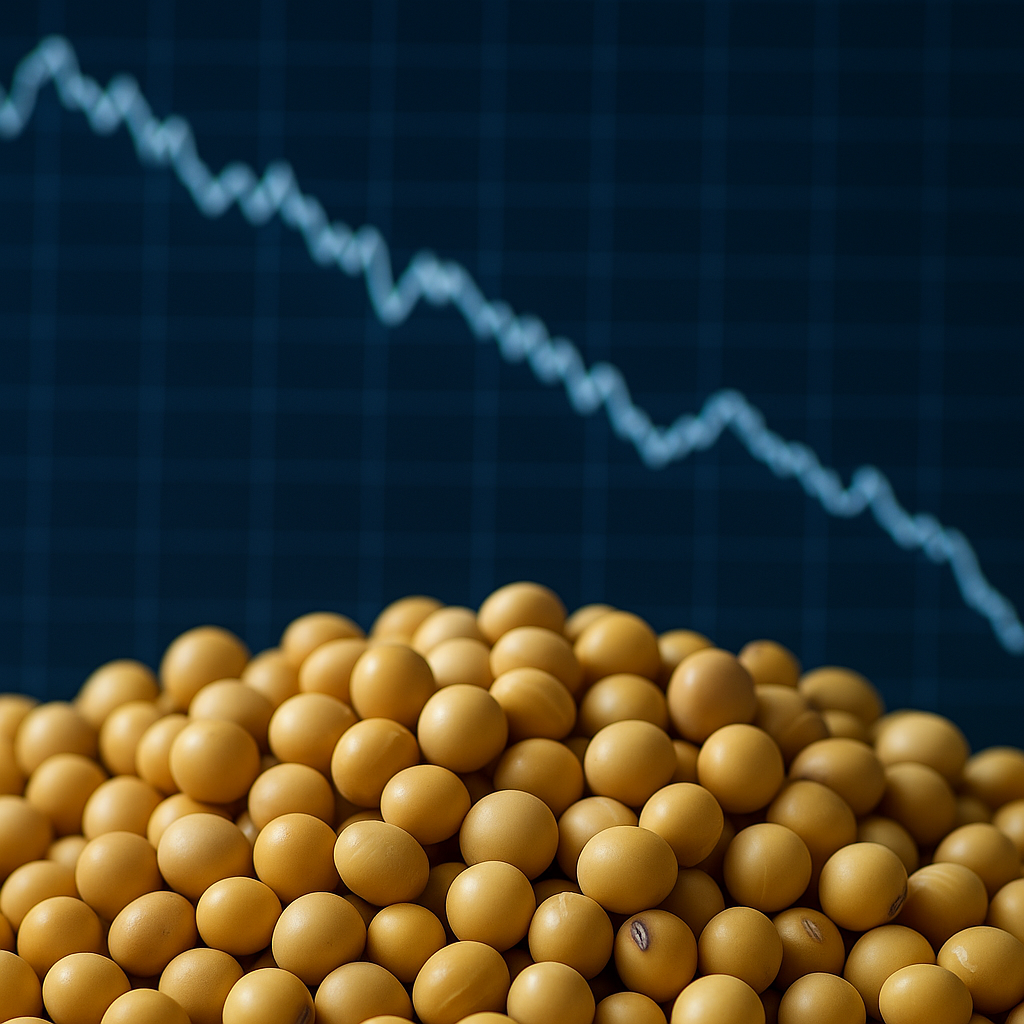Soybean farmers across the Midwest are staring down another uncertain harvest season. Prices are sagging near $10 per bushel, China has yet to book significant new-crop purchases, and trade tensions are again reshaping global markets. At the same time, domestic demand for soybean oil in renewable fuels is keeping crushers busy and preventing an even steeper fall in farm-gate prices.
China Missing from the Market
For decades, China has been the single largest buyer of U.S. soybeans, often purchasing more than half of total exports. This year, however, Beijing has been largely absent from U.S. order books. Analysts note that by mid-September there were no new U.S. crop sales to China, with Brazil and Argentina filling the gap. That absence translates into weaker export demand and narrower margins for American farmers who rely on overseas sales.
Trade disputes are a key reason. China maintains tariffs of more than 30% on U.S. soybeans, leaving American product less competitive against South American supplies. Until tariffs ease or Beijing returns to the U.S. market, exports are expected to remain subdued.
The Biofuel Backstop
One bright spot comes from home: renewable diesel and biodiesel. USDA projects that more than half of U.S. soybean oil will go to biofuel production in the 2025/26 marketing year. That surge in domestic demand keeps crushers running and supports local cash bids, especially near new or expanded crushing facilities.
Without the biofuel pull, soybean markets would likely look much heavier. More unprocessed beans would need to find a home abroad at a time when China is sidelined, pushing down futures and widening basis for Midwest farmers.
Farmer Margins Under Pressure
Even with biofuels as a stabilizing force, farm finances are tightening. Input costs—from fertilizer to equipment—remain elevated. Chapter 12 farm bankruptcies have ticked up in recent months, and regional farm groups warn of thinner margins compared to the boom years earlier in the decade.
Farmland values remain high, cushioning balance sheets but making expansion or entry harder for smaller operators. Rising interest rates add another layer of stress. While most farmland is still farmer-owned—over 60% according to USDA—concerns are growing about whether distressed sales could open the door to private equity or wealthy investors.
Bailouts and the “Socialism” Question
The last time tariffs hammered soybean exports, during the Trump presidency, the federal government stepped in with billions in direct payments to farmers. The Market Facilitation Program, funded through USDA’s Commodity Credit Corporation, was designed as a lifeline to offset lost sales to China.
Critics at the time noted that such large-scale bailouts, where Washington redistributed taxpayer dollars to keep an industry afloat, echoed policies often derided as “socialism.” Supporters countered that farmers were collateral damage in a trade war and deserved compensation.
The debate may resurface if tariffs continue to weigh on exports and cash prices. If another round of aid is announced, it could again test political narratives in the Midwest—where skepticism of government programs often collides with the reality of needing them when markets break down.
Looking Ahead
The immediate outlook points to range-bound or slightly softer soybean prices through harvest and into winter. Without Chinese buying, rallies are likely to fade. The biofuel boom provides a floor, but policy changes or weaker fuel demand could undercut that support.
The 6–12 month horizon remains a two-track story: strong domestic crush driven by renewable fuels, and weak exports until trade barriers ease. If Brazil enjoys another strong harvest, U.S. exporters may face stiff competition well into 2026.
For Midwest farmers, the calculus is clear: watch China’s purchase pace, follow weekly export sales, and track biofuel plant activity. Those three levers will determine whether soybeans hold their $10 floor—or slip further in the months ahead.




